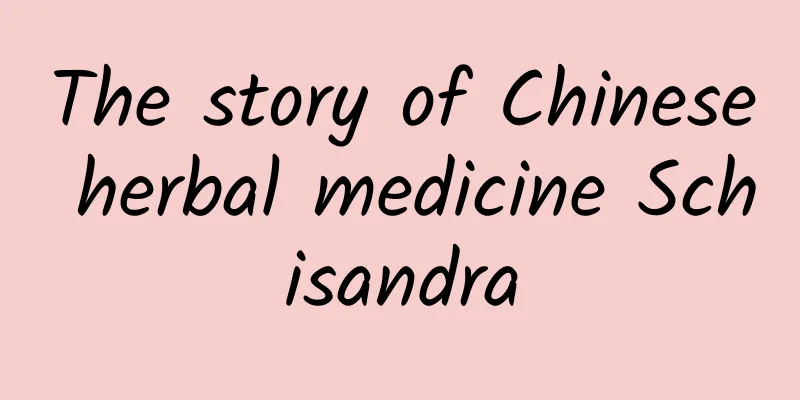The efficacy and function of Codonopsis pilosula

|
Speaking of Codonopsis pilosula, many people know that it is a Chinese medicinal material. So do you know its effects and functions? How should it be eaten? Let’s find out now. 【English Name】 Subglobularflower Asiabell Root [Other names] Snakehead Codonopsis, Stinky Ginseng, Stinky Medicine [Source] It is the root of Codonopsis subglobosa WwSmith, a plant of the Campanulaceae family . Dig it up in autumn, dry it, or cut it into thin slices. [Original form] A herbaceous vine with light yellow latex and a strong odor. The stem is much branched and sparsely covered with white prickles. Leaves are alternate, broadly ovate, relatively small, obtuse or acute at apex, shallowly cordate or obtuse at base, wavy or linearly obtuse-serrate at margin, with short procumbent hairs above and sparsely short rough hairs along the reticulate veins below. Flowers are terminal or lateral; pedicels are covered with prickles; calyx is attached to the top of the ovary, with 10 obvious radiating veins, sparsely covered with white prickles, lobes are far apart from each other, edges are finely serrated, and the back is covered with white prickles; corolla is spherical and broadly bell-shaped, 2cm long, 2-2.5cm in diameter, light yellow-green, dark purple-red at the tip, and with prickles at the outer tip. The capsule is hemispherical at the bottom and short conical or with a sharp beak at the top. The flowering and fruiting period is from July to October. [Habitat distribution] It grows on mountain grass slopes, beside rock piles, in rock crevices or in bushes beside ditches. It is mainly produced in Sichuan and Yunnan. [Properties] The root is long spindle-shaped or cylindrical, sometimes flattened, with few branches, 20 to 50 cm long and 1 to 3 cm in diameter. It is thinner near the top of the reed and shaped like a snake or earthworm head. The surface is brown or light brown, with longitudinal grooves, sparsely distributed transverse lenticels, and fine and dense ring patterns on the upper part. The rhizome (reed head) is relatively long, with many tiny stem and bud scars. The texture is hard, the bark is light brown in cross section, and the wood is yellowish white. It has a peculiar odor and tastes spicy and slightly sweet. It is warm in nature, spicy and slightly sweet in taste. 【Chemical composition】 Contains atractylodes lactone III and polysaccharides. 【Functions and indications】Same as Codonopsis pilosula. 【Excerpt】 《*Dictionary》 In the above article, we introduced Codonopsis pilosula and its characteristics. We can know that Codonopsis pilosula has very good efficacy and functions, and it has played a therapeutic and auxiliary therapeutic role in many diseases. I hope this will be helpful to everyone’s health. |
<<: The efficacy and function of water elm fruit
>>: Effects and functions of catalpa leaves
Recommend
Medicinal Value of Ganoderma Lucidum
Medicine is very common in life. Different medici...
Test-tube babies are not born in test tubes—when does an embryo become a “person”? |
IVF has changed the way we reproduce, but it has ...
Wood chips flying! See the wood chipper's amazing chipping skills
In forestry production activities, wood processin...
The efficacy, function and eating method of bergamot fruit
Buddha's hand fruit is a kind of fruit that c...
Effects and functions of Quercus liaotungensis cupules
Most people are already familiar with the traditi...
The efficacy and function of Mai Nu
Do you know what Mai Nu is? If you know, do you u...
The efficacy and function of golden back loquat
Golden back loquat is a common Chinese medicine i...
What is the medicinal value of propolis
Nowadays we pay more attention to health preserva...
These 10 "pseudo-healthy" foods that are hyped up will not only rip you off but also make you fat!
As the concept of health has gained popularity, h...
What are the benefits of eating a chicken drumstick every day? Is it good for cardiovascular health and can it help you live longer?
Eat a delicious chicken leg! Who can resist the t...
How did dinosaurs grow bird wings? A new species dating back 150 million years was discovered in Fujian
Produced by: Science Popularization China Author:...
Technology News | Self-reproducing living robot is launched
[Today's cover] On the 30th, Mount Tai after ...
Effects and functions of Shaqi
Do you know what Shaqi is? If you know, do you un...
If there are changes in this private part of the male body, it may be cancer!
When it comes to breast cancer, the first reactio...
Price of American ginseng
As a recognized and very effective health product...


![[Smart Farmers] The power of seeds: Uncovering the "treasure genes" of the National Tea Germplasm Resource Garden](/upload/images/67f0a484b3709.webp)






